Explore Picos de Europa – a tour of these majestic mountain ranges in northern Spain
The first time I visited the Picos de Europa, I was in awe of these majestic mountains in Northern Spain and loved exploring and hiking through different areas of the park to enjoy. This stunning mountain range in the area spanning three regions of Spain is simply magnificent and unexpected, you would assume you were in the Alps or any of the other alpine country and not in Spain of all places, but here it is and totally amazing to witness and visit.
I did this trip through a tour outfitter doing day trips to the Picos de Europa and other nearby attractions, but you can also do this on your own, if you have a car rental. Those are the easiest ways to explore more of the area and I will share some of the tour outfitters that do day trips in the area mostly from the cities of Oviedo or Santander.
n June 2024, I took a full-day tour with Get Your Guide (€85) from Oviedo to Picos de Europa. The 10-hour journey included stops at Covadonga Sanctuary, Lagos de Covadonga, and the charming village of Cangas de Onís and the scenic monastery Monastery of Santo Toribio de Liébana. and lunch stop on our own at Potes which had plenty of dining options in this scenic town.
The tours sponsored with a local tourist group booked through Get Your Guide was easy and the pickup location where I was at in Oviedo was convenient and on time. The only thing I would make sure to follow up on with this type of tour is to check if the tours are only offered in Spanish or other languages. I detail some of the tour outfitter options below if you want to enjoy a full day without the hassle of renting a car, logistics and learning where to go and what to see in a short timeframe visiting the region.
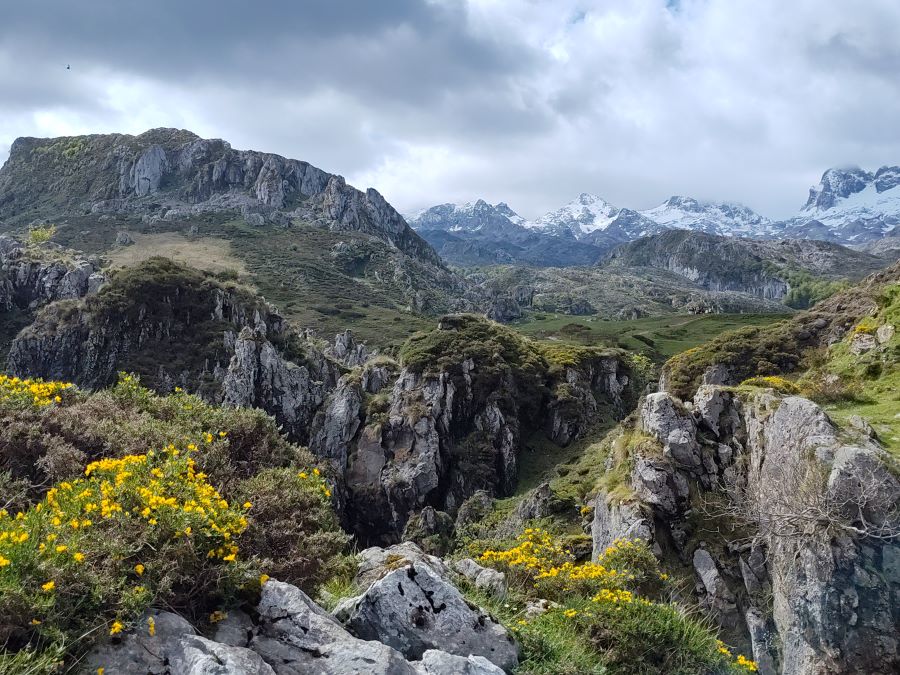
A little background on Picos de Europa
The Picos de Europa is huge and encompassing over three regions of Northern Spain with the tallest mountain peak at Terre de Cerredo rising up only 8,700 feet. There are three mountain ranges comprising the Picos de Europa to include the Western (Occidental), Central (Central), and Eastern (Oriental). Composed of mostly limestone peaks making up a major part of the mountain range and encompassing the three autonomous regions of Asturias, Cantabria and Leon and over 250 square miles.
The Picos de Europa National Park (Parque Nacional de los Picos de Europa) is truly a natural gem in Northern Spain filled with jagged mountain peaks, fast cable cars, colorful villages and delicious local culinary foods to experience.
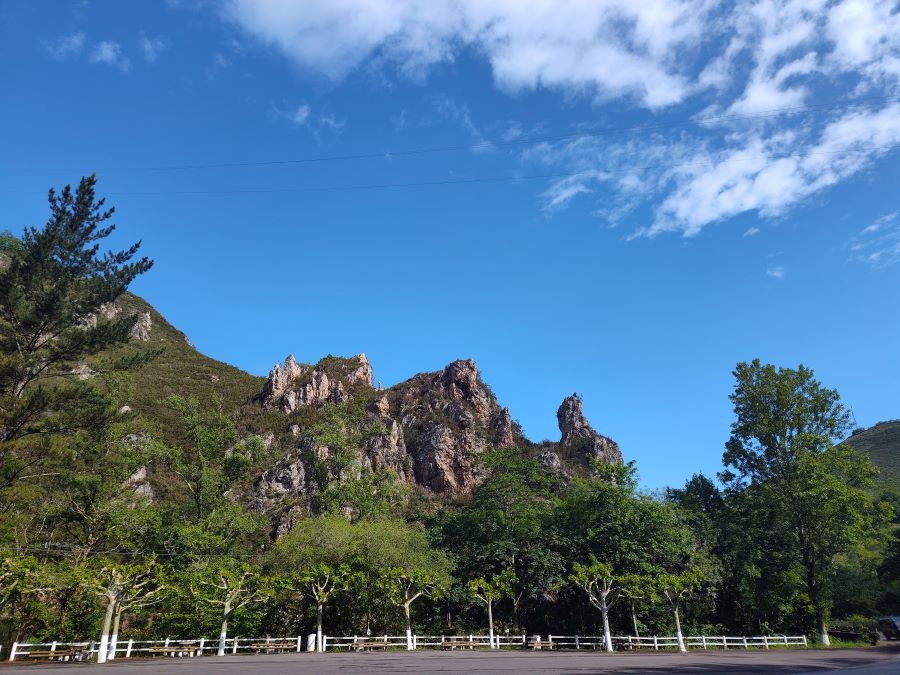
How to get to Picos de Europa
It’s easy to drive to Picos de Europa from the three main cities: Oviedo in Asturias, Santander in Cantabria and Leon in Leon. With paved roads and easy access to the national park, you can drive a rental car or take a guided tour. Since it’s a large area, it’s the two best ways to explore the vast park area.
I took a tour of Picos de Europa which originated from Oviedo on a full day tour of the national park along with other significant attractions in the immediate area. I’ll share various tours to the park and local monuments to also visit.
Renting a car is also feasible, allowing you to stop and go as you please and decide what parts of the park to explore and in your timeline without having to be hoarded by a typical tourist itinerary.
Taking public transportation is doable but very slow and getting around the massive park is not easy so I personally would not do this unless you like to do major hiking.
Distance and how to get to Picos de Europa from Oviedo
The Picos de Europa National Park is approximately 135 to 148 kilometers (about 84 to 92 miles) from Oviedo, depending on your specific destination within the park
By Car: Driving is the most flexible option, allowing you to explore the park at your own pace. The journey takes around 2 to 3 hours, depending on traffic and your exact destination. The typical route involves taking the A-64 towards Villaviciosa, then the N-634 and AS-114, leading you into the heart of the Picos de Europa.
By Bus: Direct bus services from Oviedo to towns near the park, such as Cangas de Onís or Arenas de Cabrales, are available. The journey can take approximately 3 to 4 hours, depending on the route and stops. For schedules and ticket information, check with local bus operators like ALSA.
By Train: Train travel requires a combination of train and bus or taxi services. You can take a train from Oviedo to Llanes or another nearby town and then continue by taxi or local bus into the park. This option may take longer and offers less flexibility than driving.
Guided Tours: If you prefer not to drive, consider joining a guided tour from Oviedo. These tours often provide transportation and insights into the park’s highlights. Availability can vary, so it’s advisable to research and book in advance. citeturn0search9
Distance and how to get to Picos de Europa from Santander
From Santander, the Picos de Europa mountains are about 110 to 130 kilometers (roughly 68 to 80 miles) away, depending on which part of the park you’re heading to—Potes and Fuente Dé in Cantabria are popular entry points.
By Car (most flexible and recommended):
- Route: Take the A-8 west along the coast, then exit at Unquera and follow the N-621 south through La Hermida Gorge to Potes.
- If you’re heading to Fuente Dé (for the cable car), continue past Potes for about another 20 km.
- Drive time: About 2 to 2.5 hours, depending on traffic and stops.
- Scenic value: High—this is a beautiful drive, especially as you go through the Hermida Gorge and into the mountains.
By Bus:
- ALSA offers regular bus services from Santander to Potes.
- The trip takes around 2.5 to 3 hours, depending on the schedule and stops.
- Buses don’t reach all park destinations like Covadonga Lakes or Fuente Dé directly, so you may need to combine with a taxi or local bus for further travel.
By Train:
- There’s no train service directly into the Picos de Europa.
- You can take a train from Santander to Unquera or Torrelavega, and from there, hop on a bus or rent a car.
- This option is slower and less convenient overall.
Guided Day Tours:
- From Santander, some operators run day tours into the Picos, especially to Fuente Dé or Potes.
- A good choice if you’re short on time or don’t want to drive.
Traveling from León to the Picos de Europa National Park
By Car (Most Flexible Option)
- Distance: Approximately 256–257 km*
- Estimated Time: Around 3 hours 40 minutes
- Route: Typically via the N-621, passing through scenic areas like Riaño and Posada de Valdeón. Driving provides the most flexibility, allowing you to explore various parts of the park at your own pace. The route offers beautiful landscapes, especially as you approach the mountainous regions
By Bus
- Duration Approximately **3 hours 50 minutes
- Route From León to Oviedo, then to Cangas de Onís, and finally to Covadong.
- Operator Services operated by *ALSA. While buses don’t go directly into the heart of the park, they can get you close. From towns like Cangas de Onís, you can access various trails and sites within the park
By Train and Bus
- *Duration: Approximately 3 hours 40 minutes
- *Route: Train from León to Oviedo, then bus to Cangas de Onís and Covadona.
Best time to visit
Even though the Picos de Europa National Park is open year-round, there’s ideal timeframes to visit. In general, the park’s weather is temperate due to its proximity to the coastline.
The high season to visiting the park is from the July to September months when the weather tends to be warmer and comfortable. Most of the trails will be open to exploring different parts of the park and is comfortable to hike around and explore.
Since it is the peak season, expect to see more crowds and busy accommodations, restaurants and even parking areas to park in the park.
Visiting during the shoulder season is also a great way to visit this magnificent landscape with less crowds. This includes the months of May, June, October and even the early November times before the winter season sets in. Even taking a day trip or organized tour to the area makes it easy to visit and discover the scenic beauty of the area.
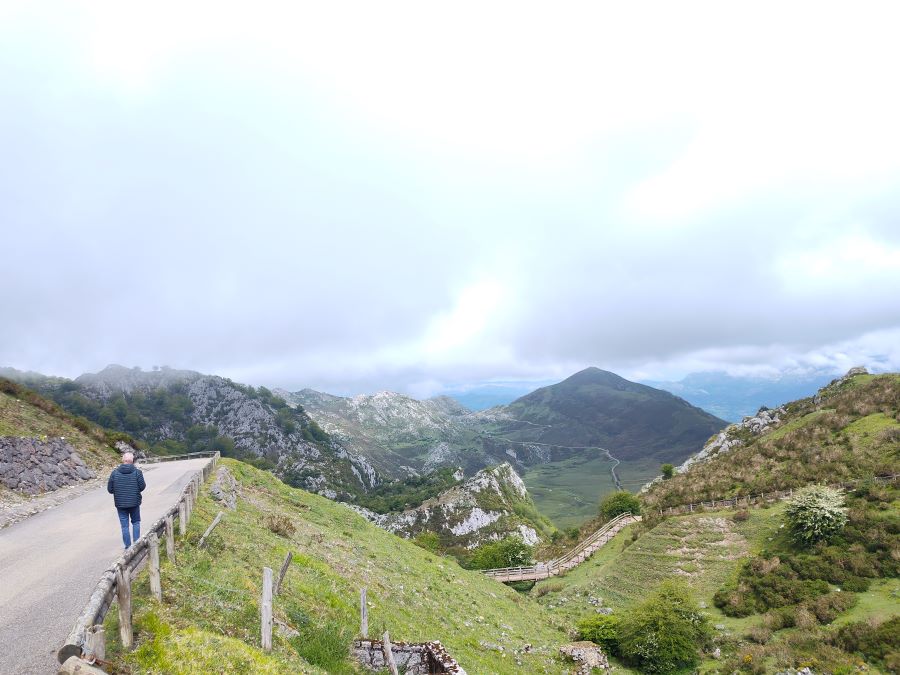
Top hiking areas to explore at the Picos de Europa National Park
Picos de Europa National Park is one of Spain’s most scenic and rugged destinations for hiking. Tucked between Asturias, Cantabria, and León, it offers a dramatic mix of limestone peaks, deep gorges, alpine meadows, and traditional mountain villages. Here’s a guide to some of the top hiking areas to explore in the park:
1. Ruta del Cares (The Cares Gorge)
Probably the most famous trail in the park—and for good reason. This path connects Caín (León) and Poncebos (Asturias) and cuts through a narrow gorge with sheer cliffs and the river Cares below.
- Distance: ~12 km one-way
- Highlights: Cliffside pathways, tunnels carved into rock, and constant views of the river and gorge.
- Experience level: Moderate; mostly flat but long and exposed in places.
2. Fuente Dé and the Cable Car Area
From the Fuente Dé cable car, you’re dropped right into the heart of the Central Massif at over 1,800 meters.
- Hikes from the top:
- Horcadina de Covarrobres to Refugio de Áliva – an easier route with rolling meadows and views of limestone peaks.
- Circular back to Fuente Dé for a more challenging descent.
- Bonus: Stunning panoramic views immediately upon exit from the cable car.
3. Lagos de Covadonga
This area features Lake Enol and Lake Ercina, two glacial lakes surrounded by gentle hills and alpine pastures, ideal for more laid-back hikes or intro treks into the Picos.
- Hikes nearby:
- Lakes Loop Trail
- Ascent to Refugio de Vegarredonda
- Good for: Beginners or casual walkers; also great for photography and wildlife spotting.
4. Vega de Ario and the Western Massif
Starting from the Covadonga Lakes, you can hike up to Refugio de Vega de Ario, which opens up stunning views toward the central massif, including the Naranjo de Bulnes (Picu Urriellu) in the distance.
- Distance: ~7–8 km one-way
- Difficulty: Moderate to difficult; elevation gain and uneven rocky paths.
- Why go: Less crowded than some other areas and wild, expansive landscapes.
5. Bulnes and the Naranjo de Bulnes
The tiny mountain village of Bulnes—accessible by foot or funicular—is a launch point for hikes toward Picu Urriellu, one of Spain’s most iconic peaks.
- Hikes:
- Bulnes to Pandébano Col (easier)
- Pandébano to Refugio de Urriellu (steeper and rocky)
- For experienced hikers: Consider continuing to the base of the peak or looping through high-mountain trails in the Central Massif.
6. Peña Main and the Eastern Massif
This less-visited area offers peaceful, high-altitude hiking without the crowds. The hike up to Peña Main offers panoramic views over the Picos and beyond to the Cantabrian coast on clear days.
- Trailheads: From Sotres or nearby villages.
- Good for: Those wanting off-the-beaten-path routes.
Tips for Hiking in Picos de Europa
- Weather can shift quickly—bring layers, even in summer.
- Water sources are limited on higher routes; carry plenty.
- Be mindful of livestock and traditional farming areas; this is still a working landscape.
- Refugios (mountain huts) are great for overnight stays—book in advance during summer.
Dining options in Potes
We had a long lunch time visit to Potes after the monastery and enjoy a casual lunch that the guide suggested for traditional food. Keep an eye out on the menu for these types of specialty dishes to try from the region from hearty mountain food, stews, delicious cheeses to local beverages to try in town.
🥘 Cocido Lebaniego
This is the signature dish of the area. It’s a rich chickpea-based stew made with garbanzo beans from the Liébana Valley, potatoes, and collard greens, served with various pork products like chorizo, morcilla (blood sausage), tocino (fatty bacon), and cured beef.
It usually comes in stages: first the broth, then the chickpeas and greens, and finally the meats. It’s filling and flavorful—classic mountain food.
Queso de Cabrales and Queso de Liébana
While Cabrales cheese is more famously Asturian, it’s found everywhere around Potes too. It’s a strong blue cheese, cave-aged, made from a blend of cow, sheep, and goat’s milk.
From Liébana itself, you’ll also find Queso de Liébana—usually semi-cured cheeses from local dairies, with distinct character from the mountain herbs the animals graze on.
Cured Meats (Embutidos de la Montaña)
The cold, dry climate is perfect for curing. Local chorizo, lomo embuchado (cured pork loin), and cecina (cured beef, a local favorite) are commonly served on charcuterie plates or as part of other dishes.
Borono
A traditional blood sausage made with pig’s blood and cornmeal, spiced and grilled. It’s more of a rustic snack or tapas item and pairs really well with cider or wine.
Cabrito or Lechazo Asado
Roast kid goat (cabrito) or suckling lamb (lechazo) are often slow-roasted with herbs, garlic, and olive oil. These are usually reserved for special occasions or weekends in rural restaurants.
Desserts
- Quesada Pasiega: A dense, sweet cake made with fresh cheese, eggs, and lemon zest. Think of it as a hybrid between cheesecake and flan.
- Sobao Pasiego: A buttery sponge cake, not specific to Potes but common throughout Cantabria, often served for breakfast or with coffee.
Orujo de Liébana (Local Pomace Brandy)
After your meal, locals will often offer a small glass of orujo, a strong spirit distilled from grape skins. In Potes, it’s often homemade or locally produced, and you can find flavored versions (like herbal or cream-based). The area even hosts an Orujo Festival in November.
The wildflower bloom season at Picos de Europa
In late spring and through the summer months, the Picos de Europa come alive with wildflower blooms that spread across the alpine meadows and rocky slopes. You’ll find bright pops of color from gentians, orchids, and alpine asters, along with rare species that thrive in the park’s unique limestone terrain.
The meadows around the Covadonga Lakes and the high trails near Vega de Ario or Áliva are especially rich with flowers, creating a sharp contrast against the grey cliffs and snow-streaked peaks. It’s not just a visual treat—there’s a subtle fragrance in the air, and the buzzing of bees and butterflies adds to the sense that the landscape is full of life. For nature lovers, this is one of the most rewarding times to explore the park.
Guided Tours of Picos de Europa
If you don’t want the hassle of driving yourself and having all the details covered to a visit to Picos de Europa, then taking a guided tour is the best choice to exploring this amazing landscape. I would opt for this option if your timeframe is limited to mostly taking a day trip. If you plan on staying longer and hiking then DIY visits is a better option.
Check out these fantastic tours below:
Santander: Picos, Santo Toribio Monastery and Potes Day Tour
This all-day tour departs from Santander and explores the Picos along with popular visits to Toribio Monastery and the Poles, Tours include transport, guide at each location, food for meals is not included.
Private Tour from Oviedo to Covadonga and Europe Peaks lakes
A pricier option but if you have a group, this would be perfect for a private tour that can be customized to your liking and where to spend more time visiting.Tours include transport, guide at each location, food for meals is not included.
From Gijón or Oviedo: Covadonga Lakes & Sanctuary and Cangas
This tour, I booked from Oviedo was also an all-day excursion visiting the main attractions, some hiking spots and places for viewpoints. Tours include transport, guide at each location, food for meals is not included.
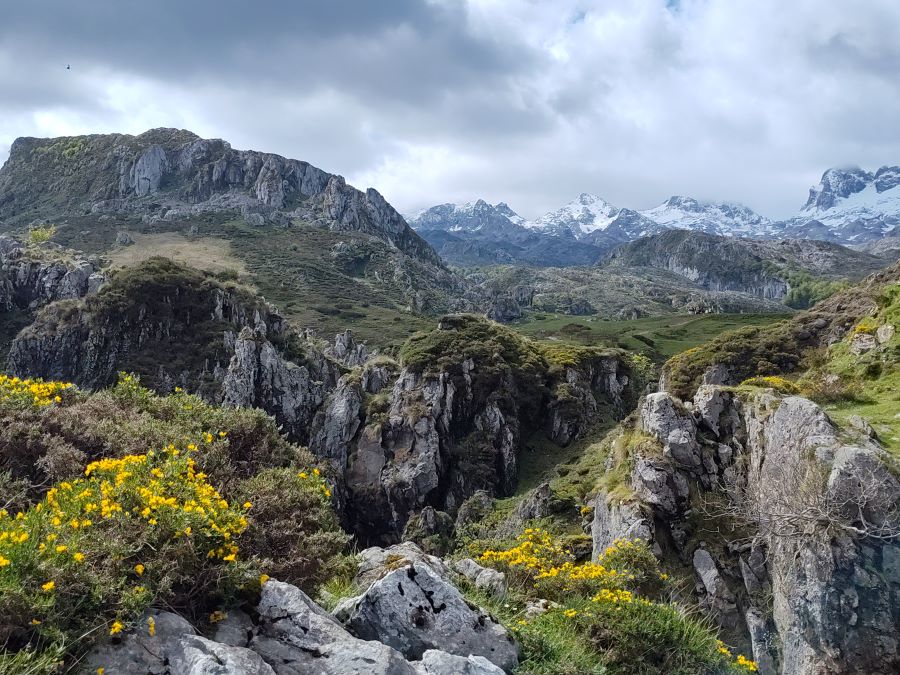
Check out these other posts to visiting the region
If you are exploring some of the places close by, check out these visits to Asturias and Cantabria region.
Take a day trip to Gijon, Spain
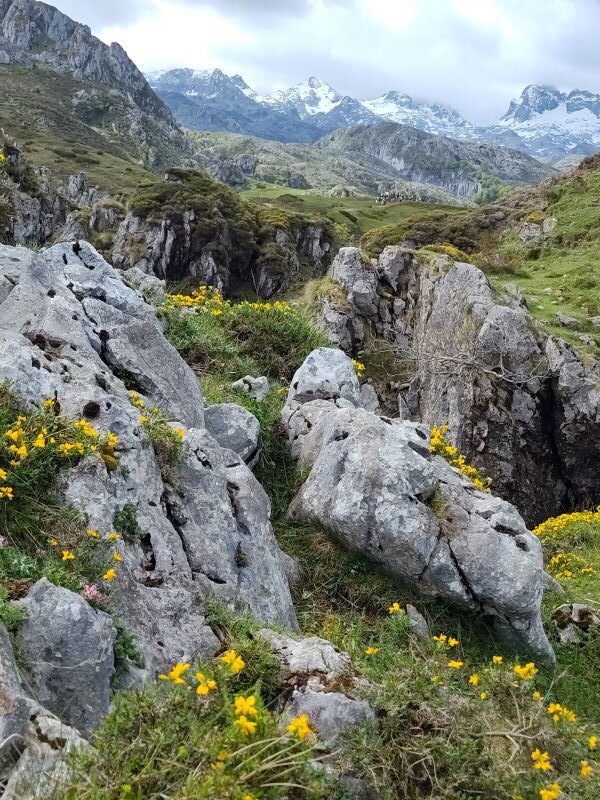
Conclusion to visiting Pecos de Europa
Exploring Picos de Europa is a reminder of how raw and beautiful nature can be when left to its own rhythm. The mix of steep limestone peaks, quiet valleys, and villages that still hold onto old traditions makes this park more than just a hiking destination—it’s a place to slow down and reconnect with something wilder and more grounded. Whether you’re tracing the cliffs of the Cares Gorge, walking through the mists around Covadonga Lakes, or watching the sun set behind Naranjo de Bulnes, every trail here leaves its mark.
If you’re looking for something beyond the typical routes in Spain, Picos de Europa offers just that—adventure with depth, silence with meaning, and landscapes that stay with you long after the hike ends.
Pack your boots, bring your curiosity, and head into the mountains—Picos is ready when you are.
Thanks for checking out Visit Spain and Mediterranean and this post. We hope you check out all the other posts to explore all around the country for inspiration.
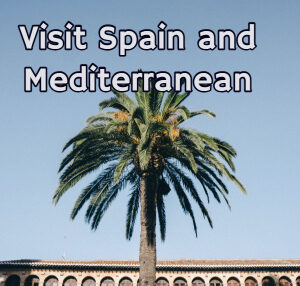
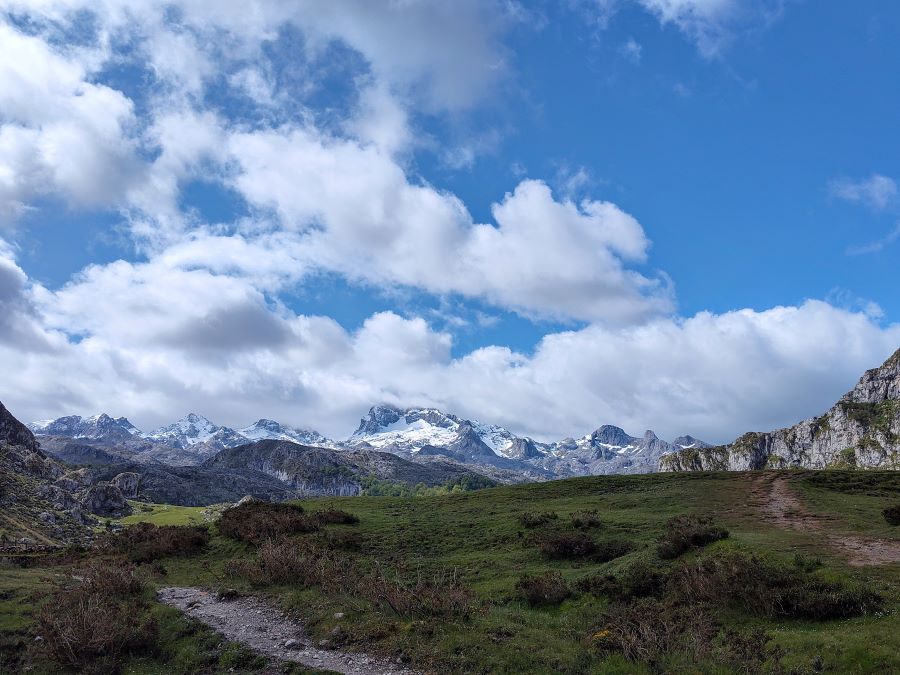
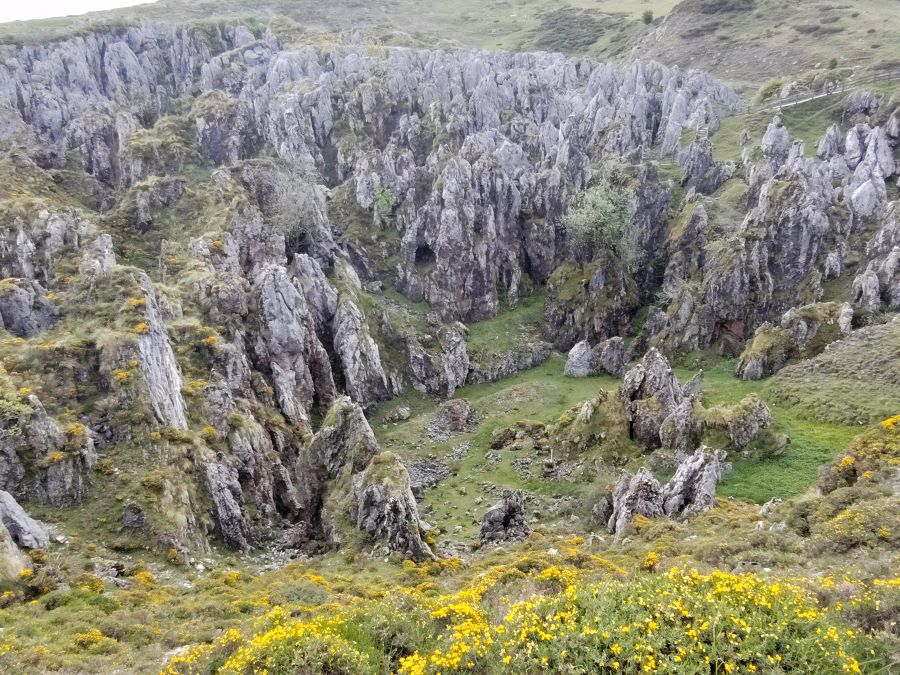
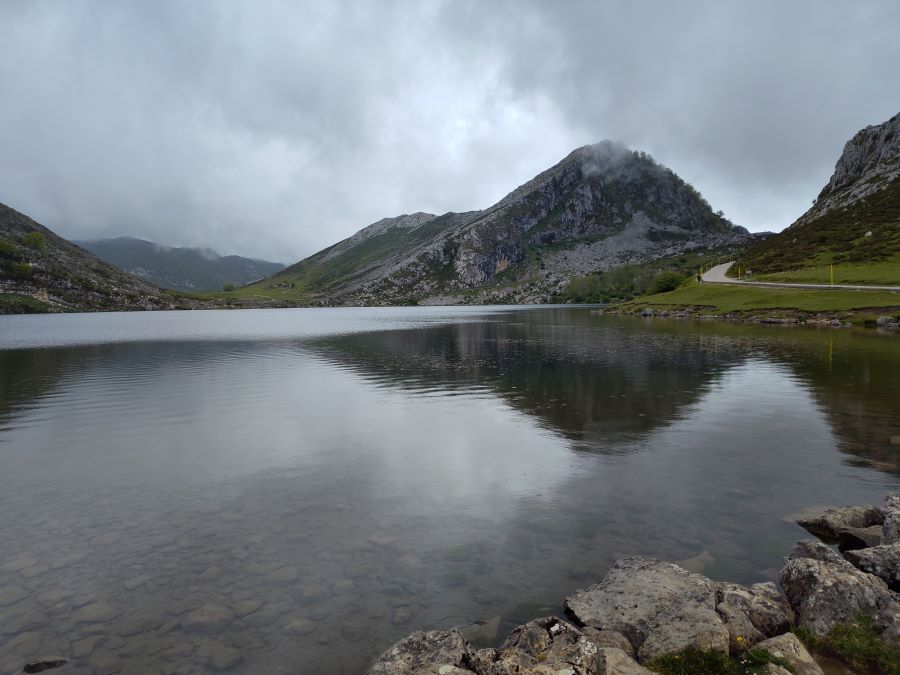
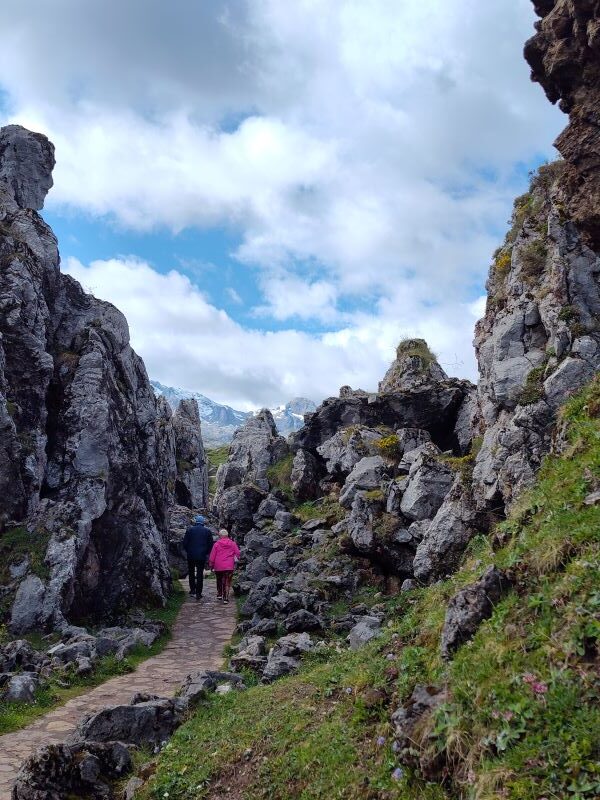
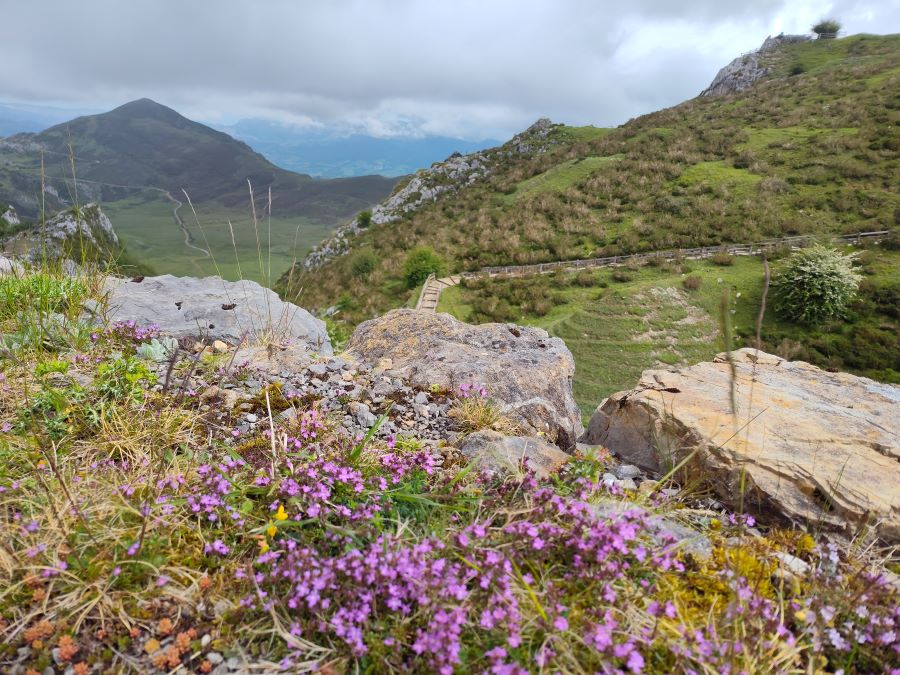
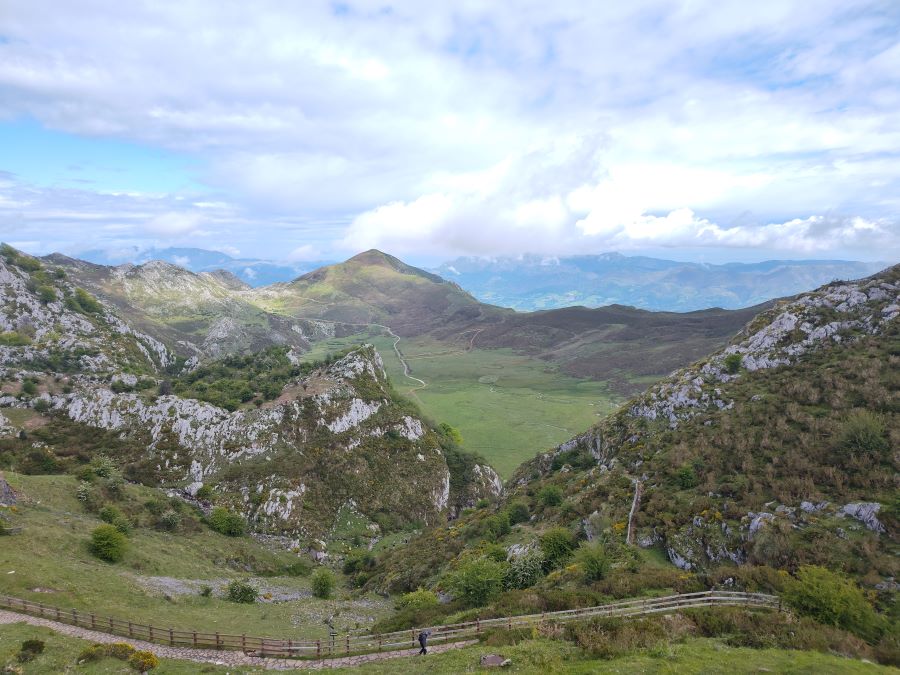
4 thoughts on “Picos de Europa”